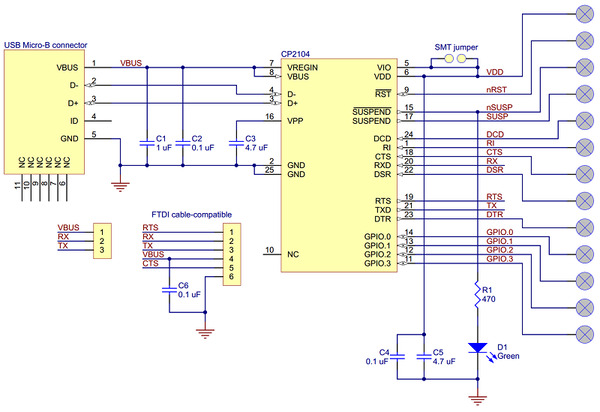

- USB PIC PROGRAMMER CIRCUIT DIAGRAM PDF HOW TO
- USB PIC PROGRAMMER CIRCUIT DIAGRAM PDF CODE
- USB PIC PROGRAMMER CIRCUIT DIAGRAM PDF PROFESSIONAL
The while(1) loop is what contains all the code in our Microcontroller program. Setting a port to 1 (using TRISB = 1) sets all pins of that port (B port) to be input pins.Īccording to that, here we have set all the pins of the port B to be Output pins, since our LED will be connected to one of the pins of the B port. In Microcontroller programming, setting a port to 0 (using TRISB = 0) sets all pins of that port (B port) to be output pins. Here we have included the xc.h header file which contains important information regarding microcontroller programming. The #include directive is used to include a header file. Notice that here we have followed the norm that names of symbolic constants are in uppercase in C. The value of that constant is 20000000, which is the frequency of the crystal oscillator (20MHz). Here the name of the constant is _XTAL_FREQ. The #define directive is used to define a symbolic constant. These are the preprocessor directives in use.

Let’s just use them as-is for now, and in later article let’s discuss them. These special lines of code are mostly auto-generated using the Configuration Bits option in MPLAB X IDE. Mind you, there are several types of jumper wires and should be used according to your need. We just have to plug and pull them into and out of the breadboard. Jumper wires are just connecting wires we use in such electronics projects which use breadboards. The resistor notation 330R just means 330 Ohms. We use resistors of different ratings for controlling current flow. That’s all we need to know for right now. Why do we need capacitors here?Īlthough the actual explanation would make you close this article right now, the simple explanation is they smoothens current, and also blocks DC current from passing through certain paths in the circuit. This range is indicated in the datasheet of the LM7805 regulator. This voltage regulator outputs 5V regardless of input voltage but to a certain input range. The last 5 in its name gives us the output voltage from that regulator. These work under the principle of Piezoelectric Effect. Here, 20MHz is the frequency of our oscillator. What is Crystal Oscillator?Ĭrystal Oscillator is what keeps the timing of our microcontroller. Just like you can fit a pencil into a loaf of bread (although I don’t recommend doing so). But when we are using a breadboard, we can fit the components without soldering so that they are readily removable from the breadboard.
USB PIC PROGRAMMER CIRCUIT DIAGRAM PDF PROFESSIONAL
Normally in professional circuits, the components are soldered. I know it’s a bit weird, but let’s stick to the norm. The tech people just love to call the process of writing the code to the microcontroller as Downloading. Of course, you can build your own programmer but for the sake of this tutorial, let’s just use what’s available.
USB PIC PROGRAMMER CIRCUIT DIAGRAM PDF HOW TO
But how to write that program to the microcontroller? That’s where PICkit comes in.

You want a microcontroller to do some task right? How does it know what to do? Obviously you program it using your computer. The microcontroller we use in this project (PIC16F877A) has 40 pins. Microcontrollers have pins for data transfer. Not getting too technical, a Microcontroller is just a small computer on an Integrated Chip (IC). A Cup of tea to celebrate your achievement!įirst things first What is a microcontroller.47k (47 kiloOhm) Resistor ( R2 in the circuit diagram).330R (330 Ohm) Resistor ( R1 in the circuit diagram).220nF capacitor ( C1 in the circuit diagram).0.1uF Capacitor ( C3 in the circuit diagram).2 x 22pF capacitors ( C2 and C4 in the circuit diagram).If you find any error in the following (which I have proof-read), please don’t hesitate to leave a comment below or to contact me over LinkedIn or Facebook. Working with higher voltages for this is not recommended. This project is using a simple 9V battery as the power source. I am not responsible for any damages incurred to your equipment, circuit components, or other properties. This is intended for educational purposes only. If you keep going with me till the end of this project, you will be blinking an LED using the PIC16F877A microcontroller.


 0 kommentar(er)
0 kommentar(er)
